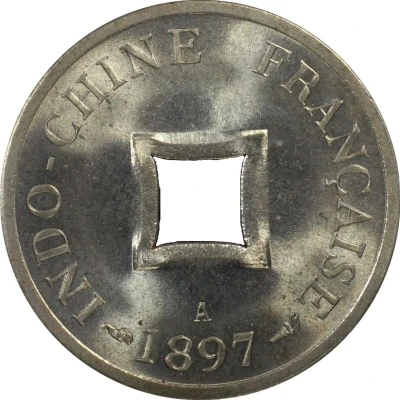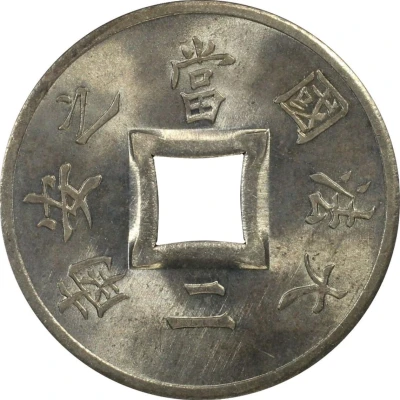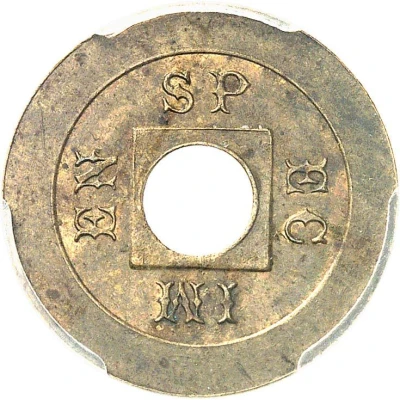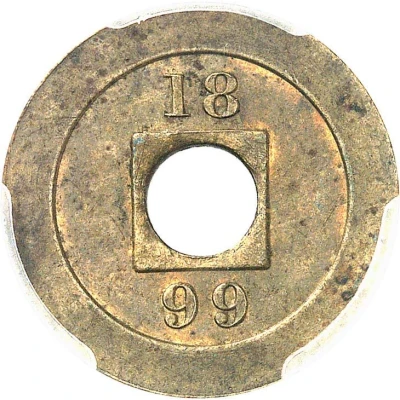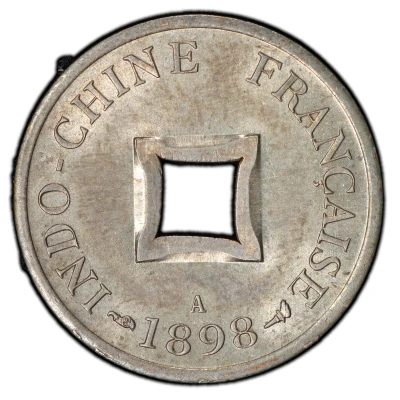
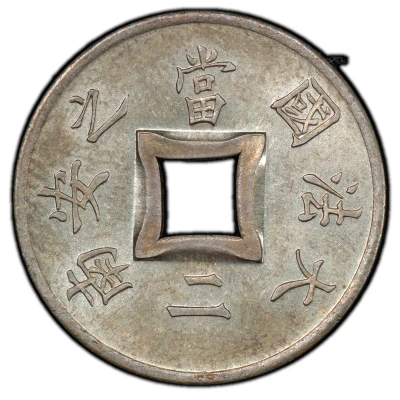

© PCGS
Sapeque Pattern
1898 year| Silver plated nickel silver | 1.98 g | 20 mm |
| Issuer | French Indochina |
|---|---|
| Period | Third Republic (1870-1940) |
| Type | Pattern |
| Year | 1898 |
| Value | 1 Sapeque (0.002 ICFP) |
| Currency | Piastre (1880-1952) |
| Composition | Silver plated nickel silver |
| Weight | 1.98 g |
| Diameter | 20 mm |
| Thickness | 1 mm |
| Shape | Round with a square hole |
| Technique | Milled |
| Orientation | Coin alignment ↑↓ |
| Demonetized | Yes |
| Updated | 2024-10-04 |
| Numista | N#142282 |
|---|---|
| Rarity index | 95% |
Reverse
Chinese lettering around square hole
Script: Chinese
Lettering:
南安之法國大
當二
Translation:
French Annam
Worth two
Engraver: Jean-Auguste Barre
Edge
Plain
Comment
The Chinese text has an incomplete value. It could be interpreted as “worth two cash/dongs” (ten cash in a cent, two dongs in a Sapèque) or “worth 2/1000 Piastre”.Interesting fact
The Pattern Sapeque (Pattern) 1898 from French Indochina made of Silver plated nickel silver weighing 1.98 g is a rare and unique coin. One interesting fact about this coin is that it was minted during a time of great change and upheaval in French Indochina, which was a colony of France that included present-day Vietnam, Laos, and Cambodia. The coin was minted in 1898, just a few years before the turn of the century, and it features a unique blend of French and Indochinese design elements, reflecting the cultural exchange and fusion that was taking place in the region at the time. This coin is a fascinating piece of history that offers a glimpse into the complex and dynamic relationship between France and its colonies in Southeast Asia during the late 19th century.
